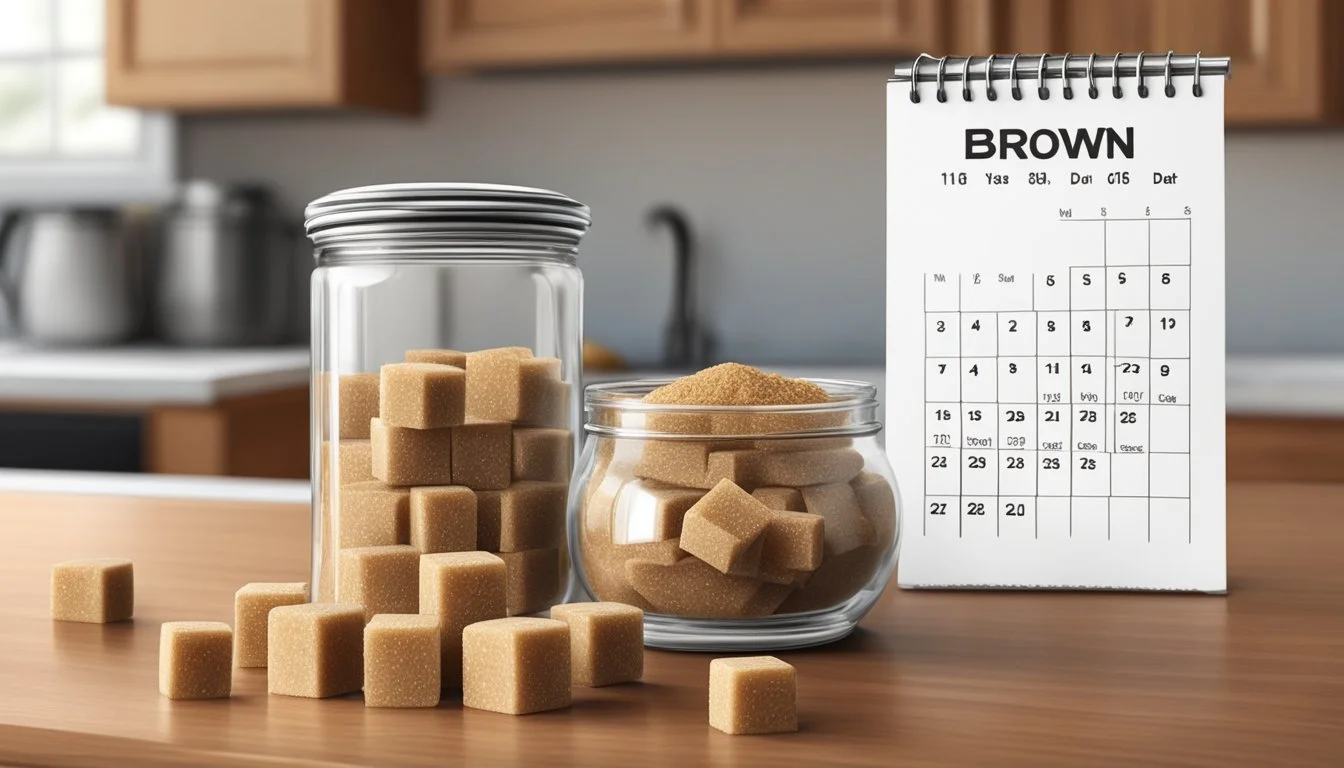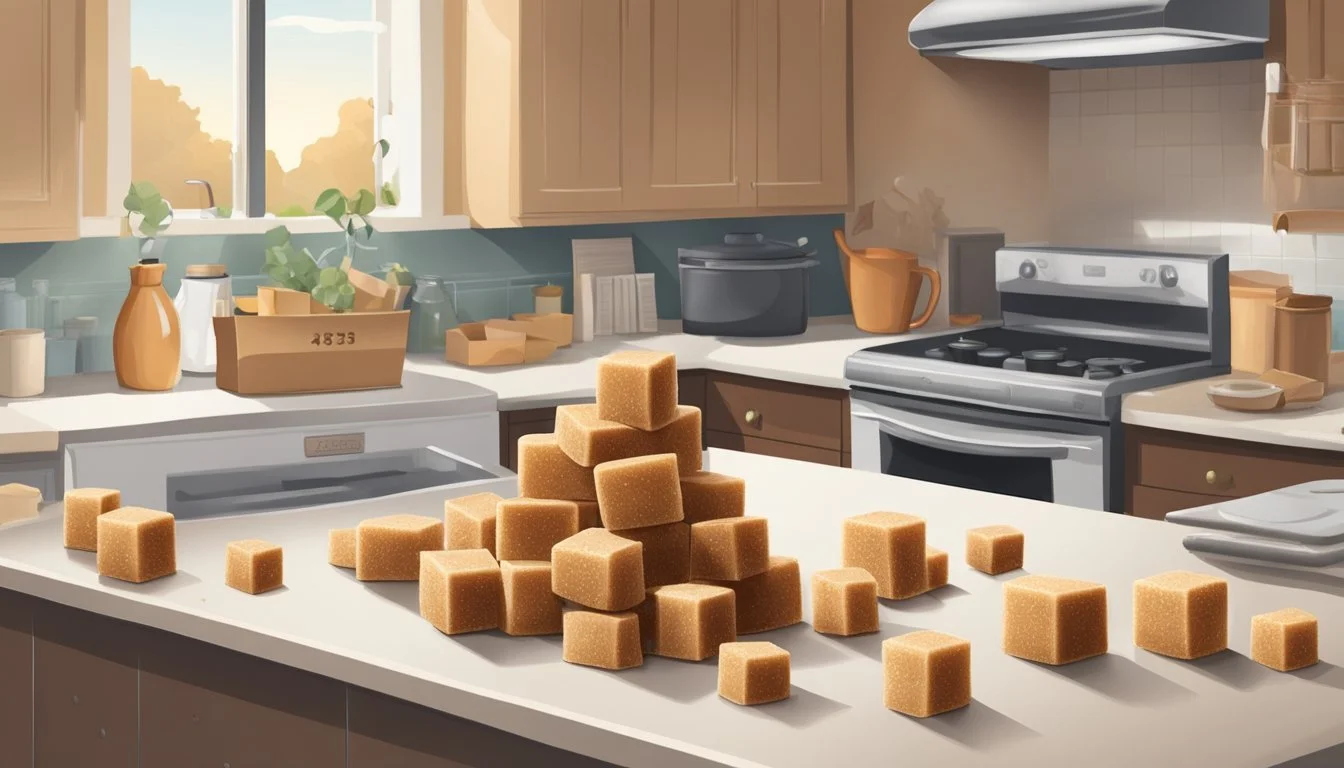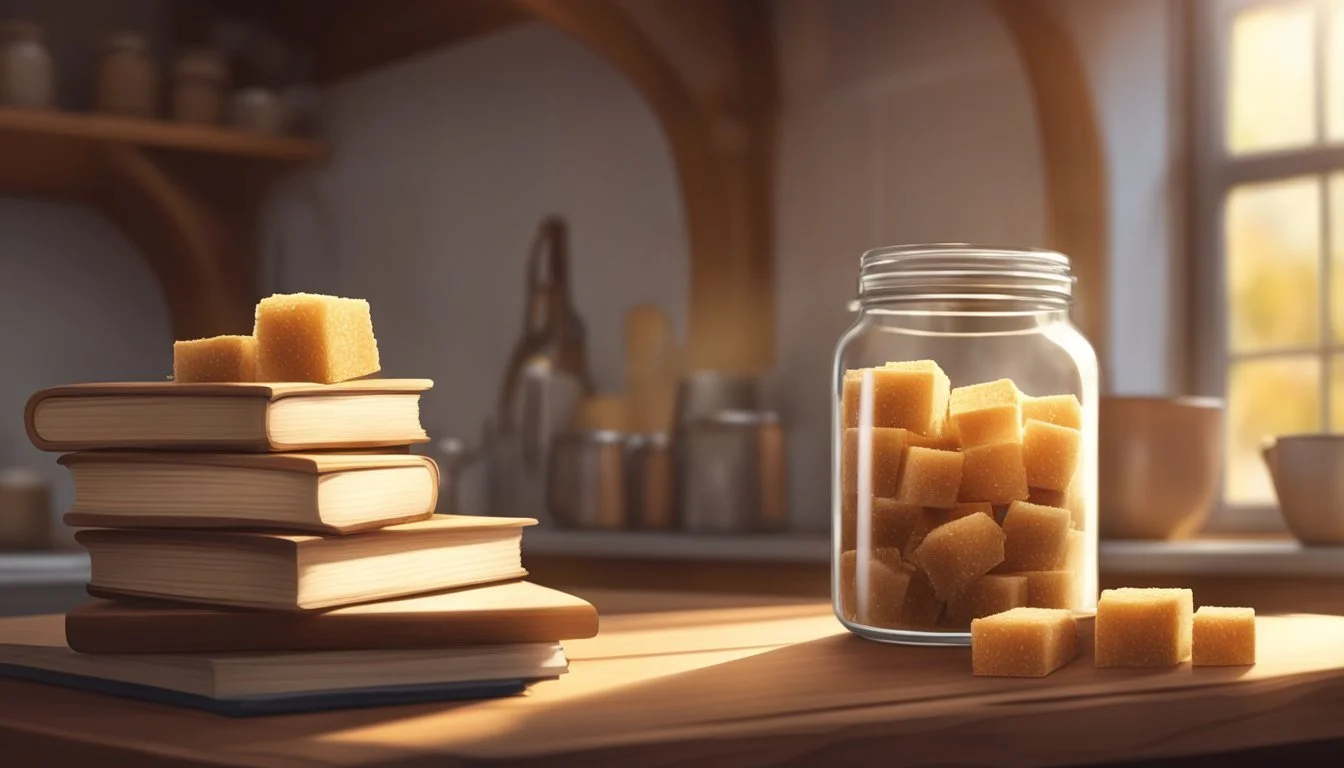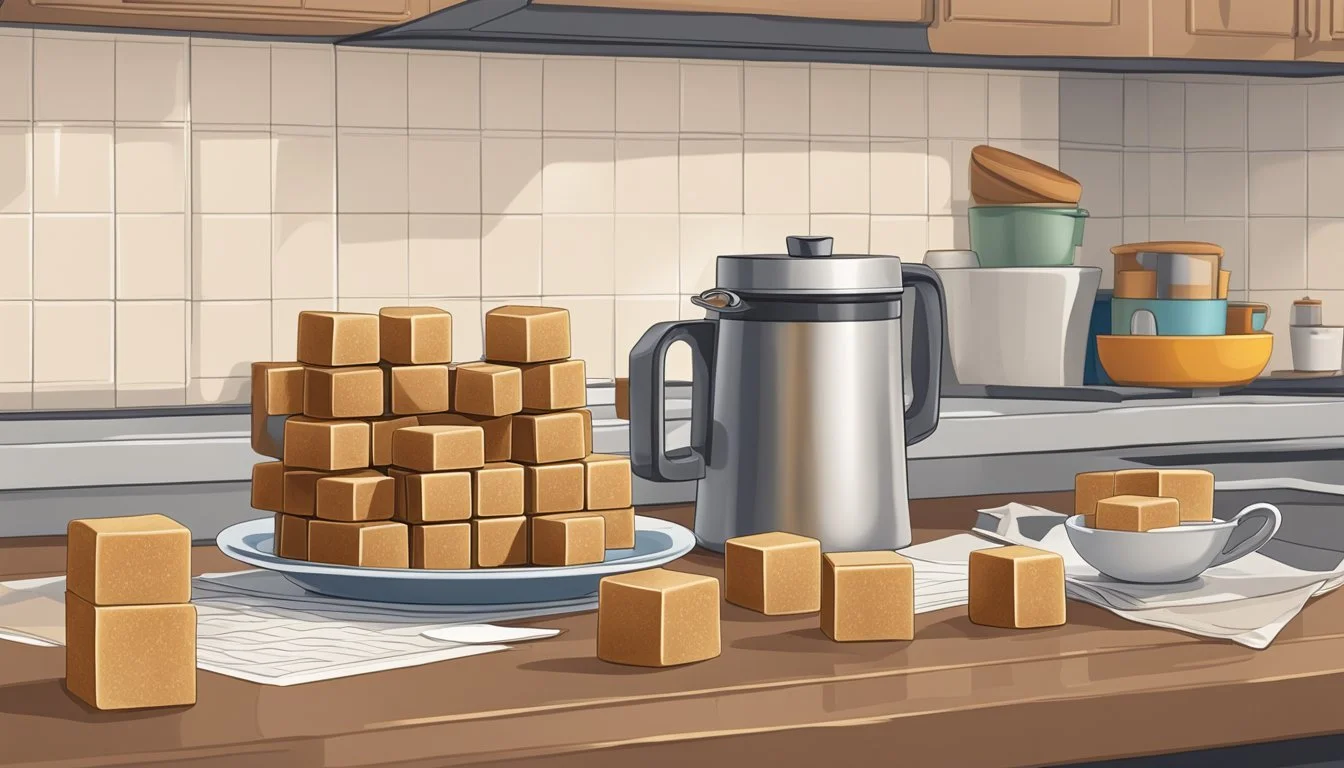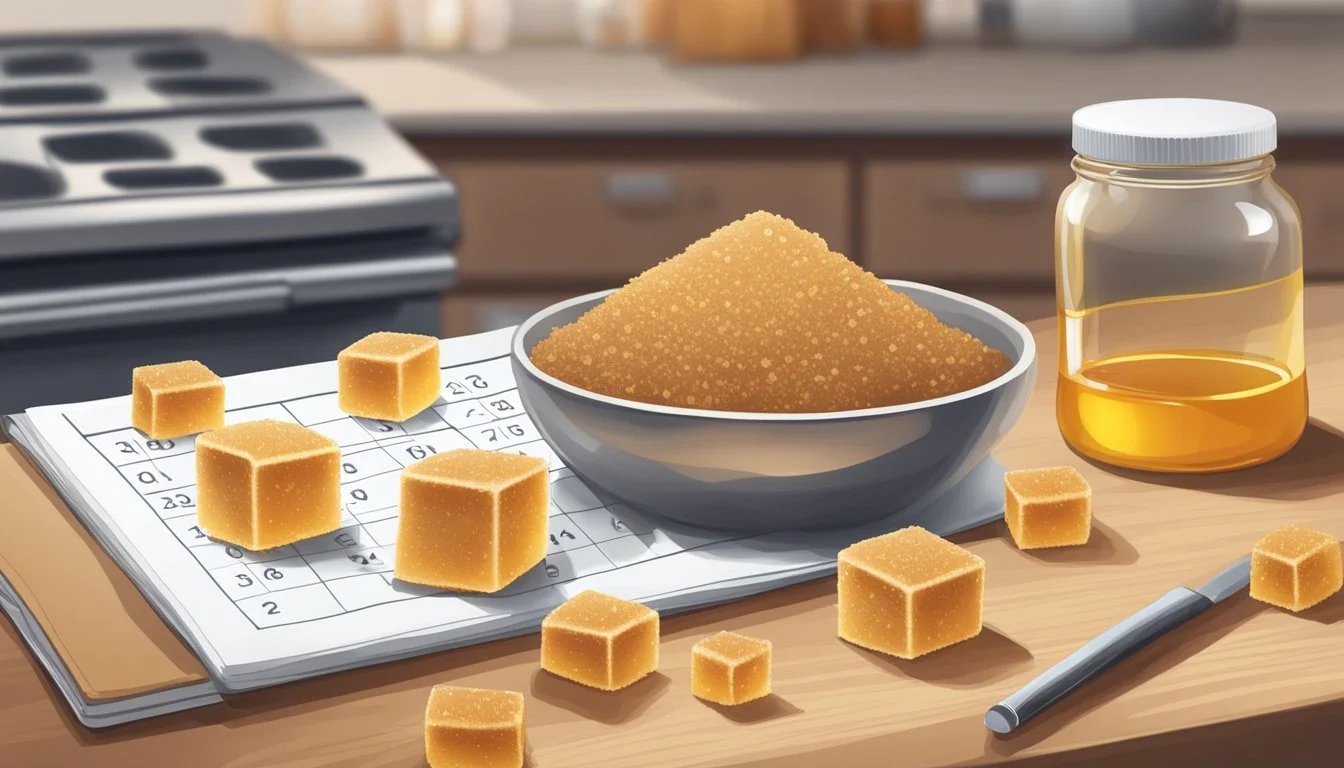How Long Do Brown Sugar Cubes Last?
Shelf Life and Storage Tips
Brown sugar (how long does sugar last?) cubes are a staple in many kitchens, used for both culinary and beverage sweetening purposes. Their lifespan is a point of curiosity and practical concern for consumers and culinary enthusiasts alike. Brown sugar, by its nature, tends to have a long shelf life due to the presence of molasses. This component not only imparts a unique flavor and moist texture but also acts as a natural preservative.
Under optimal conditions, brown sugar cubes can last indefinitely. However, the quality is best preserved within the first two years. A common issue with brown sugar, including sugar cubes, is hardening, which occurs when the moisture content diminishes. Despite this, the sugar does not spoil in the traditional sense, and its hardened state can be remedied to restore its former texture.
Proper storage plays a pivotal role in maintaining the quality and longevity of brown sugar cubes. They should be kept in a cool, dry place, sealed in an airtight container to prevent the sugar from losing moisture and to protect it from odors and contaminants. Such practices ensure that the brown sugar cubes remain useful for both cooking and sweetening for an extended period.
Understanding Brown Sugar
Brown sugar is a versatile sweetener with a distinctive color and flavor profile that differs from white sugar, primarily due to its molasses (how long does molasses last?) content. This section explores its composition, comparison with white sugar, and the qualities that make it unique.
Composition and Types
Brown sugar is essentially white granulated sugar with varying amounts of molasses added back into it. Molasses is responsible for its distinctive brown color and moist texture. There are two main types of brown sugar:
Light Brown Sugar: Contains up to 3.5% molasses by weight.
Dark Brown Sugar: Contains up to 6.5% molasses by weight.
The higher the molasses content, the darker and more intense the flavor of the brown sugar.
Brown Sugar vs. White Sugar
When comparing brown sugar to white sugar:
Color: Brown sugar has a deep brown color, whereas white sugar is colorless.
Texture: Brown sugar is soft with a moist texture, while white sugar is dry and granular.
Flavor: The flavor of brown sugar is rich with hints of caramel, due to molasses, compared to the neutral sweetness of white sugar.
Aspect Brown Sugar White Sugar Moisture Higher moisture content Low moisture content Flavor Rich, with hints of caramel Sweet without complexity Color Brown White Texture Soft and moist Dry and granular
Distinctive Qualities
Brown sugar's unique features are derived from its composition:
Taste: It has a sweet taste with a robust molasses flavor that lends depth to baked goods and sauces.
Moisture Content: The presence of molasses gives brown sugar a higher moisture content, contributing to a more moist product.
Texture: Its natural moisture means brown sugar can clump and harden over time. However, proper storage can prevent this.
Aroma: Brown sugar carries a warm, sweet, molasses-like aroma that is particularly noted in baked goods.
Shelf Life and Storage
Brown sugar cubes, when stored properly, have an indefinite shelf life, retaining their quality over time. Ensuring the right storage conditions and understanding the factors that could affect their shelf life will help prevent spoilage and maintain their sweetness and texture.
Ideal Storage Conditions
Brown sugar cubes should be stored in a cool, dry area away from direct sunlight. The optimal storage is in an airtight container at room temperature, which helps in preserving the quality of the sugar cubes by preventing exposure to air and moisture. To maintain the natural moisture of brown sugar and prevent it from hardening, the pantry should have a moderate level of humidity.
Factors Affecting Shelf Life
The shelf life of brown sugar cubes is impacted by several factors:
Exposure to air can lead to loss of moisture, resulting in hard, clumpy sugar cubes.
Humidity plays a critical role, as too much can cause clumping, while too little can dry out the sugar cubes.
The molasses content in brown sugar attracts moisture, which can affect its texture and cause clumping if not stored correctly.
Temperature fluctuations can lead to condensation within the storage container, impacting the quality of the sugar.
Common Storage Missteps
Avoiding the following missteps can greatly extend the shelf life of brown sugar cubes:
Do not store brown sugar cubes in a non-resealable package after opening.
Avoid storing them near strong odors or volatile substances, as sugar can absorb these odors.
Do not expose the sugar cubes to a humid environment without proper sealing, as this can accelerate spoilage.
After opening, ensure the sugar cubes are resealed tightly to minimize exposure to environmental factors.
Preservation Techniques
Preserving the quality of brown sugar cubes involves maintaining an appropriate moisture level and protecting them from conditions that can cause changes in texture or flavor.
Proper Sealing and Containers
To extend the shelf life of brown sugar cubes, they should be stored in airtight containers to prevent exposure to air and moisture. A sealed container, such as a jar with a tight lid or a plastic container with a snap-on lid, is ideal. Wrapping the sugar in plastic wrap or foil before placing it in the container can provide additional protection.
Extending Freshness
Keeping brown sugar cubes fresh involves controlling their exposure to air and moisture. For additional protection against hardening, a sugar saver or a small piece of apple wedge or orange peel can be added to the container—this helps to moderate moisture levels. These items should be checked and replaced regularly to avoid spoilage that could affect the sugar.
Revitalization of Hardened Sugar
If brown sugar cubes become hardened, they can often be softened again. Placing a damp paper towel over the hardened sugar in a container overnight can help restore moisture. Alternatively, placing the brown sugar in a microwave-safe bowl and heating it for short intervals until it softens can be effective. When using an oven, a similar method can be utilized—heat the sugar at a low temperature, breaking it apart as it softens.
Freezing Sugar Cubes
Freezing is a lesser-known method for preserving the quality of sugar cubes. Brown sugar can be stored in a plastic bag and placed in the freezer, which will prevent moisture changes and extend its shelf life. Sugar cubes can be used directly from the freezer and will quickly return to a usable texture at room temperature.
Identifying Spoilage
Brown sugar cubes, under ideal conditions, have a long shelf life but can exhibit signs of spoilage and compromised quality. It is crucial to identify these signs promptly to ensure the sugar remains safe and pleasant to use.
Signs of Compromised Quality
The quality of brown sugar cubes can deteriorate over time, even if no visible spoilage is present. Texture changes are one of the primary aspects to consider. Brown sugar should have a naturally soft and clump-free consistency. If the sugar has hardened significantly or turned into a single solid mass, it has likely lost its ideal quality. While this does not necessarily mean it is bad, it may not perform as expected in recipes.
Contamination Indicators
Contamination is a clear signal that brown sugar cubes should no longer be used. Visible mold growth, which could manifest as fuzzy spots or discoloration, is a definitive indicator of spoilage. Brown sugar should be discarded if there are any signs of insect infestation, such as pantry bugs or their larvae and eggs. These pests not only compromise the sugar's cleanliness but may also pose health risks. An off smell is an additional warning sign; brown sugar that emits a strange or unpleasant odor should be considered contaminated.
Usage Tips and Tricks
For best results in the kitchen, one must know not only how to store brown sugar cubes but also how to ingeniously incorporate them into recipes, understand the substitutes, and make the most of their unique properties in cooking and baking.
Incorporating in Recipes
When incorporating brown sugar into recipes, it is essential for a cook to pay attention to the specific qualities that brown sugar brings to the table. Its rich caramel-like flavor and inherent moisture provide depth to both the aroma and texture of baked goods such as cookies and cakes. To fully integrate brown sugar in cooking, it should be pressed through a sieve or broken down if clumpy to ensure an even distribution.
For Cookies: Soften brown sugar in a bowl before mixing to avoid unincorporated lumps.
For Baked Goods: Combine brown sugar with spices like cinnamon for a warm, spiced flavor profile.
For Glazes: Brown sugar melts well, making it excellent for creating rich glazes for meats and vegetables.
Brown Sugar Alternatives
In instances where brown sugar is unavailable or undesirable, knowing the alternatives can save a recipe. White sugar or granulated sugar can often be used in place, albeit with a loss of the molasses-heavy flavor and moisture brown sugar is known for.
Powdered Sugar: Not recommended for all recipes as it lacks the moisture content.
Granulated Sugar: Can replace brown sugar by volume, though flavor and texture will be altered.
Honey or Maple Syrup: These can impart a different but similarly rich sweetness.
Maximizing Brown Sugar Benefits
To extend the advantages of brown sugar in cooking and baking, storage plays a pivotal role. Kept in an airtight container away from moisture and light, the sugar's quality remains intact, ready to enhance the flavor and texture of culinary creations.
Texture: Store properly to maintain the soft texture important for certain recipes.
Flavor: Use brown sugar to add a touch of molasses flavor, enriching the overall taste.
Benefits: Its moisture gives certain baked goods a desirable chewiness not easily replicated with other sugars.
Handling and Safety
When managing the longevity of brown sugar cubes, ensuring the quality and safety of the sugar involves proper storage conditions to prevent pest infestations and knowing the right way to dispose of old sugar that's past its prime.
Preventing Pest Infestation
To maintain the quality of sugar crystals and prevent pests, one should store brown sugar cubes in a sealed container. Airtight containers are imperative to deter common pantry pests like ants and weevils. Storage locations should be cool and dry; a pantry or cabinet away from direct sunlight and heat sources works well. In humid environments, a fridge can provide an ideal storage condition to preserve the quality and deter mold growth, though it's not typically necessary.
Safe Disposal of Old Sugar
If brown sugar cubes show signs of spoilage, such as mold presence or an off smell, they should be disposed of immediately. For safe disposal, the outdated or spoiled brown sugar should be placed in a sealed bag to prevent attracting bugs and then put in the trash. While sugar itself doesn't spoil in the traditional sense, contamination with food particles or moisture can lead to mold growth, rendering it unsafe for consumption.
Frequently Asked Questions
In this section, we address common queries regarding the shelf life and maintenance of brown sugar to keep its quality intact for culinary use.
Difference Between Light and Dark Brown Sugar
Light and dark brown sugar are differentiated by their molasses content—light brown sugar has less molasses, imparting a milder flavor, while dark brown sugar has more, contributing to a richer, deeper flavor. Both are used in recipes to add sweetness and a moist texture.
Can Sugar Expire?
Brown sugar does not have a true expiration date, but its best quality is maintained for approximately two years. The absence of moisture and pantry pests are crucial for it to last indefinitely without losing its flavor or quality.
Methods to Keep Sugar from Clumping
One can prevent clumping in brown sugar with the following methods:
Store in an airtight container.
Utilize sugar savers or a terracotta disk.
Reseal packaging with a sealing clip.
By retaining the sugar's moisture content, these practices ensure brown sugar remains free-flowing and ready for recipes.
Solutions for Sugar Hardening
When brown sugar hardens, solutions include:
Softening with a slice of fresh bread or a marshmallow in the container.
Briefly microwaving with a damp paper towel covering the sugar.
Storing brown sugar cubes with terracotta sugar savers to maintain moisture levels.
It is important to reseal brown sugar after use to prevent hardening and extend its usability.
Conclusion
Brown sugar, when stored properly, is a durable pantry staple that can last well beyond its "best by" date. Storage conditions are critical in ensuring sugar remains useable. Brown sugar should ideally be sealed in an airtight container to defend against moisture and prevent it from hardening.
Key points to remember:
Brown sugar lasts indefinitely, but is of best quality within 2 years.
Moisture is the enemy; keep it stored in a dry place.
Hardened brown sugar can be restored using various techniques, such as placing a slice of bread or a damp paper towel in the container for a few hours.
Lastly, to maintain its usability, one can also freeze brown sugar to extend its freshness. If brown sugar is kept away from air, moisture, and pests, its shelf life is virtually endless. However, watch for any signs of spoilage, such as changes in texture or the presence of bugs, before use. Despite most expiration dates suggesting otherwise, under typical storage situations, brown sugar will remain a reliable sweetener for an extensive period.
Additional Resources
For those interested in learning more about the preservation and shelf life of brown sugar, numerous resources are available to guide storage practices and maximize longevity.
Online Articles and Blogs:
Storables provides practical advice on storing sugar cubes, with a focus on airtight containers and moisture control.
Chef's Resource offers insights on how to extend the shelf life of brown sugar, including the option to freeze it for preservation.
Foodiefied shares tips on how to detect spoilage in brown sugar through smell and how to store it properly in airtight containers.
Books and Guides:
The Pantry Primer: This comprehensive guide offers in-depth knowledge on pantry essentials, including the best ways to store various types of sugar.
Food Storage for Self-Sufficiency and Survival: A resource packed with information on storing food at home for long-term use.
Websites of Sugar Manufacturers:
Manufacturers often provide FAQs and tips on their websites regarding the storage and shelf life of their products.
Culinary Forums and Community Boards:
Online culinary communities, such as Cook's Illustrated forum or eGullet, where experienced cooks and food enthusiasts discuss and share their methods for sugar storage and preservation.
By utilizing these resources, readers can gain a comprehensive understanding of how to maintain the quality of brown sugar cubes and ensure they remain a sweet addition to their pantry for as long as possible.
References
Chef's Resource: "How Long Does Brown Sugar Last?" A resource detailing the shelf life of brown sugar and the factors influencing its longevity.
Alexander Johnson - Storables: "How To Store Sugar Cubes" Insights provided on the best practices for storing sugar cubes to maintain freshness and prevent clumping.
Eat By Date: "How Long Does Brown Sugar Last? Does Brown Sugar Go Bad?" This article discusses the indefinite shelf life of brown sugar and provides tips for storage to ensure quality preservation past the best before date.
Does Brown Sugar Go Bad? Tips on Storage, Shelf Life, and Restoration Confirmation that brown sugar can last indefinitely under proper storage conditions, including best-before dates and methods to restore hardened brown sugar.
The information regarding the permanence of brown sugar's edibility was reaffirmed by sources that explain the appropriate storage methods to extend its shelf life.
Recommendations to prevent air and moisture exposure, and to keep brown sugar free from pests, were commonly noted as significant factors for preserving quality.


